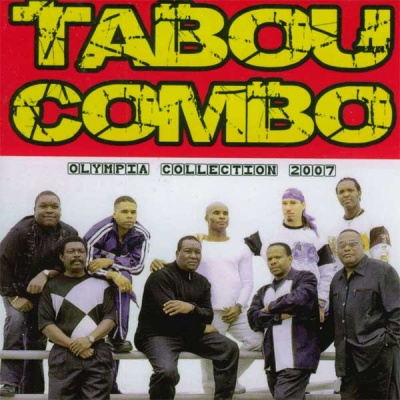Personal Expression through Music
From Seminar 2: The Peopling of New York City
Music: Wyclef Jean, Tabou Combo and How Creole Music is Received by the American Audience
Both rapper Wyclef Jean and the Kompa band Tabou Combo become international stars by developing a fan base while living in Brooklyn. However, they both also found ways to develop a cult-like following in their country of origin, Haiti. Language played a very important role in the development of their following, and in both of their histories they had to leave their Haitian Creole language behind in order to reach international status. Even so, they still found ways to exhibit their transnational identity.
Wyclef was born in a small village in Haiti called La Plaine; he lived the first six years of his life in the country before moving with his family to Flatbush in Brooklyn. In Brooklyn he became involved in the Rap scene and with two high school friends gained international fame by forming the group The Fugees ("Bio", Wyclef.com). While climbing up the ladder to international stardom, Wyclef always used his star power to try and draw the world’s attention towards the problems of Haiti and raising issues close to Haitian immigrants’ hearts in English such as immigration (Ollison). However, interestingly enough, he never recorded in Haitian Creole until 2004. This is because he realized early on that in order to make it in the music-business, one must sing in English. As he once stated in an interview, “(Haitian) bands need to sing in English to crossover. Look at Ricky (Martin). All his cuts that were crossover successes were in English (Jean, Kompa Magazin).”
This is not always the case with Wyclef however; though he had never recorded in Creole until recently, from very early on he would sing and produce songs with Spanish lyrics that went on to be huge successes. Through collaborations with such Latin artists as Celia Cruz, Carlos Santana and Shakira, Wyclef not only reached to the top of the charts and gained record airplay but he also garnered himself several Grammy awards ("Bio", Wyclef.com). It is due primarily to population differences and history that allows Latin musical forms and Spanish lyrics to be profitable while Wyclef’s Creole album had less than 400,000 units sold (Mitchell). According to Census data there were only 453,368 people in America who spoke French-Creole within their households in the year 2000. This number is made to look even smaller when compared to the number of people who spoke Spanish or Spanish-Creole within the home, which totaled a whopping 28,101,052 (“Table 1a."). Also, Latinos have had a longer affiliation with the American music industry. By the 1930s Cuban Sons and Salsas were being heard in the Palace Theater and the Waldorf Astoria (“History of Salsa”, Latin Goes Mainstream). On the other hand Canne à Sucre, which was, “…Brooklyn’s first full-time Haitian restaurant/nightclub…(Averill, 142)”, was only opened in the late sixties. Also, Canne à Sucre catered mostly to the Haitian-immigrant population of Brooklyn whereas Latin music was being played in the upscale hotels and theaters of Manhattan where a wider, richer and more influential audience was found.
Tabou Combo gained much fame early on in Haiti and was even named Best Group in 1969 by Radio d’Haiti (Averill, 141). The band then disbanded, only to regroup several years later when several of the original members moved to America (and later to Flatbush as well) for jobs and schooling. In Brooklyn they were able to cash in on the ever growing Haitian population there which already knew the group very well, but they wanted to reach outside of this limited audience. The way they did this was through changes in language and form. Not only would they begin their tunes with Latin and African-American influenced intros (slipping right back into the traditional Kompa rhythm when done) but also began to incorporate lyrics and exclamations in both Spanish and English. Averill states, “This demonstrated the group’s versatility, but it was also intended to attract a wider African diasporic audience of other Caribbean immigrants and African Americans. (Averill, 144)” This approach gave them much success, both on a national and international level. In particular their song “New York City” which incorporated Spanish, English and Creole lyrics reached #1 on the French music charts while also establishing them as not simply a Haitian band but as a transnational band spreading the musical heritage of Haiti to the rest of the world (Averill, 145-146).
Though their stories are quite different, they share one common factor; in both careers language was specifically catered to the American audience. Through my research of these two bands what I have concluded is that in order for Kompas or any form of Haitian music to become relevant in the American music market like Latin forms such as Reaggaeton or Meringue, two things must happen. Firstly, as I mentioned before, the Haitian-American population must increase. The Haitian population in America has been steadily increasing, but new immigration laws may dowse that trend if enacted. Secondly, as Wyclef stated, English lyrics must be used. I was lucky enough to attend Tabou Combo’s 40th Anniversary celebration at SOB’s on April 11th, 2008 and in that performance there was encouraging evidence that Haitian artists are taking note of this. Towards the end of the show, a woman by the name of Misty Jean was invited up to the stage to join in with the band. In her performance, she switched back and forth from Creole to English. If this is any sign of what the newest generation of Haitian artists has to offer, I feel that in 20 years America may be dancing to the infectious Kompa rhythms while clubbing.
Works Cited
Averill, Gage. "Moving the Big Apple: Tabou Combo's Diasporic Dreams." Island Sounds in the Global City. Ed. Ray Allen and Lois Wilcken. New York: The New York Folklore Society and the Institute for Studies in American Music, Brooklyn College, 1998. 138-161.
"Bio." Wyclef.Com. 2008. 15 Apr. 2008 <http://www.wyclef.com/beta/beta/bio.html>.
"History of Salsa." Salsaweb. 2001. 4 May 2008 <http://www.salsaweb.com/ny/historyofsalsa.htm>.
Mitchell, Gail. "Sounds Without Borders." Billboard Magazine Vol. 119 Issue 47 (November 24th, 2007): 51.
Ollison, Rashod D. "Life is a 'Carnival' to Rapper Wyclef Jean." Baltimore Sun 16 Jan. 2008, sec. C: 1.
Sternsmusic. Digital image. [CD Cover to "Olympia Music Collection 2007"]. 2007. 3 May 2008 <http://www.sternsmusic.com/discography_detailed/4336>
Wyclef Jean on Flickr. Digital image. [Photo of Wyclef Jean]. 4 May 2008 <http://flickr.com/photos/jazminmillion/2297159689/>.

